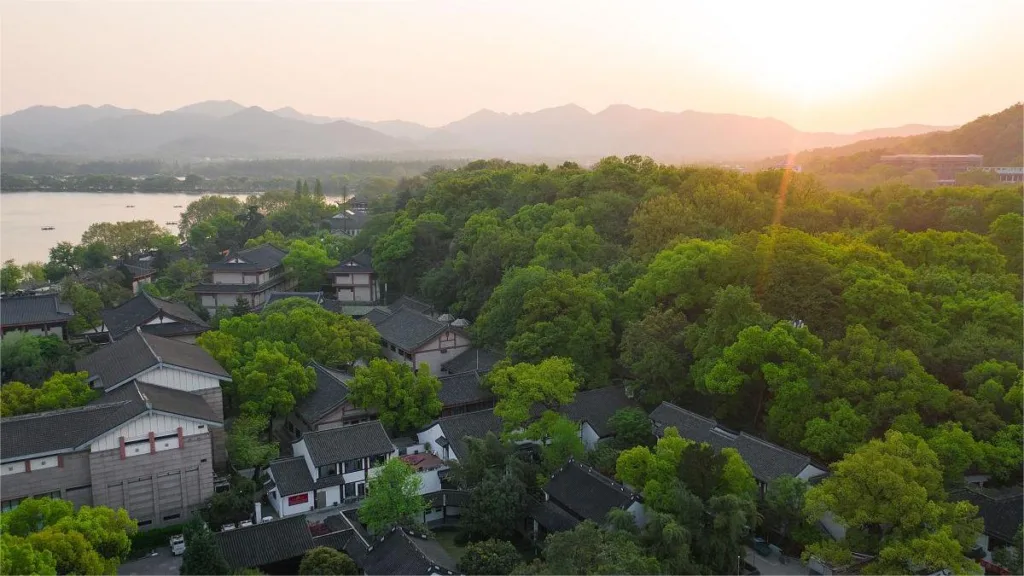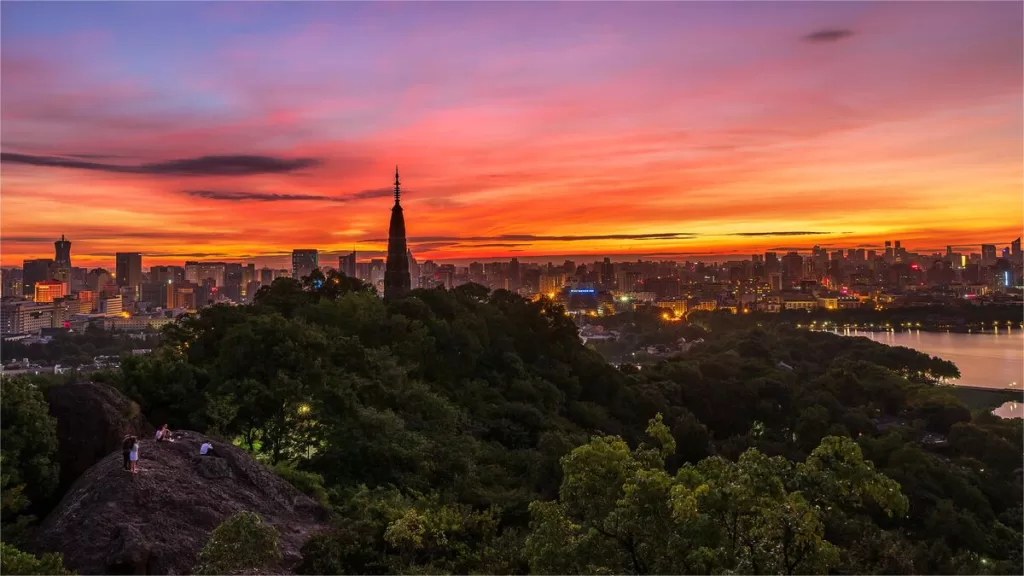The Tomb of Yue Fei (岳飞墓) is the burial site of Yue Fei, a renowned military general who resisted the Jin Dynasty during the Southern Song Dynasty. In the 11th month of the 29th day of the lunar calendar in the 11th year of the Shaoxing era (January 27, 1142), Yue Fei fell victim to a plot orchestrated by Qin Hui. His body was secretly carried out of Lin’an City by the prison guard Wei Shun, who buried him at Jiupu Cunsi, located at the northern slope.
In the 32nd year of the Shaoxing era (1162), during the reign of Emperor Xiaozong, Yue Fei was posthumously exonerated and accorded the rites of a first-rank official. His remains were then reburied with the proper honors at the southern foothill of Qixia Ridge in Hangzhou.
In 1979, the Tomb of Yue Fei underwent a comprehensive restoration in the architectural style of the Southern Song Dynasty. The tomb complex is divided into three parts: the tomb garden, the Loyalty and Righteousness Shrine, and the Commencement of Loyalty Shrine. The tomb garden faces west to east, while the Loyalty and Righteousness Shrine and the Commencement of Loyalty Shrine face north to south, all enclosed by stone walls.
Table of Contents
- Basic Information
- Location and Transportation
- Highlights of Yue Fei’s Tomb
- Attractions near Tomb of Yue Fei
Basic Information
| Estimated Length of Tour | 1 hour |
| Ticket Price | 25 RMB |
| Opening Hours | 7.30 -17.30 |
| Telephone Number | 0086-0571-87996663 |
Location and Transportation
The Tomb of Yue Fei is located at 80 Beishan Road, Xihu District, Hangzhou, Zhejiang Province, China. Situated at the southern foothills of Qixia Ridge in Hangzhou, it is part of the historical and cultural landscape of the West Lake.
To get there, you can take bus 7, 27, 277, 510, West Lake Inner Ring Line, or West Lake Outer Ring Line and get off at Yuefen Stop (岳坟站).
Highlights of Yue Fei’s Tomb
Tomb Garden

To the left of Yue Fei’s tomb is the burial site of his son, Yue Yun, surrounded by a stone railing. Four iron-cast figures below the tomb gate depict the conspirators who framed Yue Fei – Qin Hui, Lady Wang, Zhang Jun, and Wan Qiuwei – kneeling in repentance. In front, a memorial arch bears the inscription “Jin Zhong Bao Guo 尽忠报国” (Serve the Country with Utmost Loyalty). Flanking the arch on the north and south sides are two corridors, displaying 125 stone steles from various dynasties. The north corridor showcases Yue Fei’s poems, memorials, handwritings, and engraved portraits, while the south corridor features poems, eulogies, and inscriptions from later generations honoring Yue Fei.
Tomb Pathway

The pathway to Yue Fei’s tomb is adorned with exquisite stone carvings from the Ming Dynasty, including pairs of civil and military figures, stone horses, stone sheep, and stone tigers. Along the way stands the Jingzhong Cypress Pavilion, housing fossils of eight ancient cypress trees, each over 120 million years old, known as “silicified wood” in paleontology.
Shrines

The main hall of Yue Fei’s Loyalty and Righteousness Shrine features a double-eaved gable roof in a wooden structure. A plaque with the inscription “Xin Zhao Tian Ri 心昭天日” (Loyalty Illuminates the World) hangs between the eaves, rewritten by General Ye Jianying in 1979. Inside the hall, numerous plaques and couplets by renowned scholars are displayed, with Yue Fei’s statue in the center. Above the statue, a golden plaque with the calligraphy “Huan Wo He Shan 还我山河” (Restore My Rivers and Mountains) is believed to be in Yue Fei’s own handwriting. The Commencement of Loyalty Shrine, converted into the Yue Fei Memorial Hall in 1984, houses three exhibition rooms displaying historical facts and collected artifacts, including a Southern Song Dynasty stone figurine unearthed during the tomb’s restoration in 1979.








